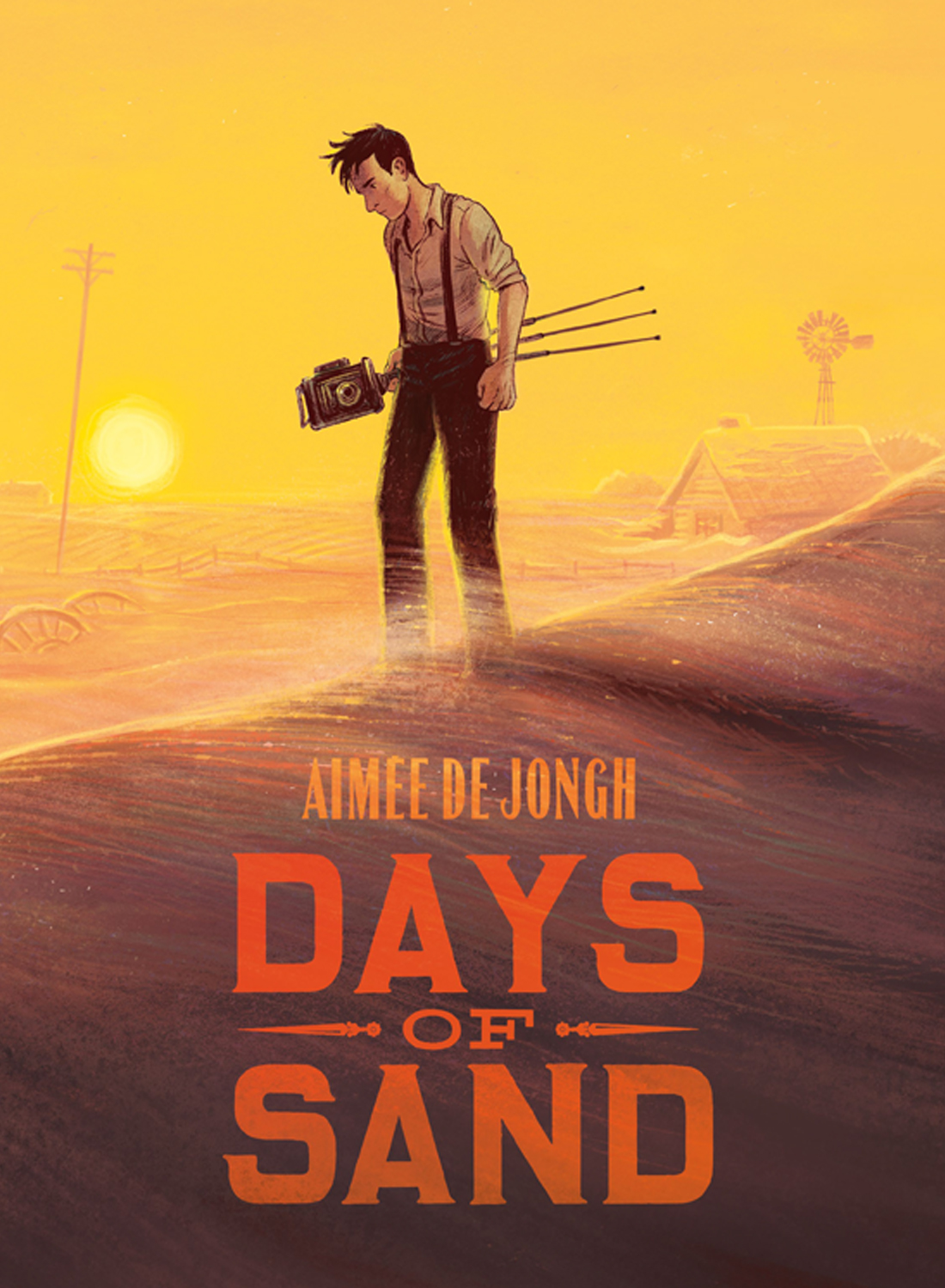
By Aimée De Jongh, translated by Christopher Bradley (SelfMadeHero)Â
ISBN: 978-1-914224-04-1 (HB)Â Â
Certain eras and locales constantly resonate with both narrative consumers and creators. The mythical Wild West, the trenches of the Somme, Ancient Rome, 1940s Hollywood and so many more emotionally evocative enclaves of mythologised moments spark responses of drama, tension and tales crying out to be told. Â
One of the most evocative derives from Depression-era America, but rather than a noir-drenched misty Big City, Aimée De Jongh drew her inspiration from a scrupulously documented decade long human catastrophe that inescapably presages ecological collapse in our imminent future.Â
The Netherlands-born comics creator, story-boarder, Director and animator studied at Rotterdam, Ghent and Paris before beginning her career as a newspaper cartoonist. While releasing graphic novels The Return of the Honey Buzzard, Blossoms in Autumn and Taxi!, the multi-disciplined, multi award-winning artist worked in television, on music videos and animated movies (Aurora), for gallery shows (Janus), and latterly turned to graphic journalism, detailing refugee life in Greece’s migrant camps.Â
Combining overlapping interests in travel, documentary and ecology, her latest opus tells a carefully curated and fictionalized account of one young man’s reaction to the 1930’s Dust Bowl disaster and the resultant diaspora it triggered over ten years of drought. Â
To research the tale – released in Europe in 2021 as two-volume Jours de sable – De Jongh travelled extensively through the region (Oklahoma to California), visiting remaining historical sites and museums while accessing the precious wealth of photographic material sponsored by the contemporary Farm Security Administration. This federal entity recorded the tragedy which forms the narrative spine of this story. Â
De Jongh’s blog offers interested readers further insights and this book includes commentary and many of the original photographs that ultimately moved the event from environmental aberration to cultural myth and human tragedy.Â
This is not a tale about plot and action but premise and reaction. Captivatingly rendered with colour acting as a special effects suite and utilizing original 1930s photographs throughout, it sees unemployed photographer John Clark take a job in 1937: hired like many others to document the human and economic effects of a decade-long drought and bad farming practises on the people of Oklahoma. Trapped at the heart of an un-Natural Disaster, they daily endure the frightening and no-longer gradual transition of their once lush lands of milk and honey and grass and fruitfulness into a new Sahara desert…Â
Unfortunately, Clark has more baggage than just a shooting script and camera cases, and as he carries out his task, he slowly loses perspective and secure distance in the face of awestriking nature and humanity in its rawest, most reduced state. How can his camera intrude and explore when he’s as much lost and unbalanced as any of his subjects?Â
It’s easy to read in subtextual messages and apply modern tropes and memes ranging from the movie Dune to the current global migrant crisis or each and every western government’s insipid pettifogging disinclination to take charge or an iota of responsibility. The world has never been in a worse state and if this book motivates anyone to make a change – however small – that’s a big win. However, it’s not the point. Â
Terror, loss, hopeless misery and hunger for a better life have always been with us. The fact that our imminent doom is self-inflicted is irrelevant. The fact that everyone is/will be affected is a non sequitur. What’s germane is that when Kent or Hampshire are dust bowls and all Pacific islands are underwater, it’s still going to come down at some point to every one of us making a decision… Â
An international hit garnering many honours and accolades, Days of Sand is staggering beautiful, distressingly unforgettable and never more timely, but please don’t dismiss it as a trendy and pretty polemic. This is a timeless examination of individual human choice in reaction to overwhelming, immeasurable forces and how individuals may respond. What’s presented here is one concerned artist’s narrative riposte. What’s yours?Â
Jours de sable © DARGAUD-BENELUX (DARGAUD-LOMBARD S.A.) 2021, by Aimée De Jongh. All rights reserved Â
